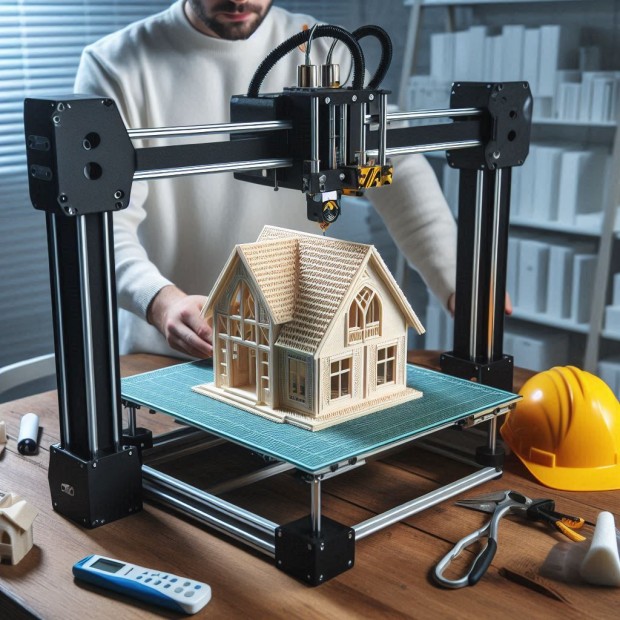The utilization of 3D printing technology could transform the affordable housing market. Recently, Havelar used a 3D printer to construct a gorgeous home that was 860 square feet in size in just 20 hours. This forward-thinking strategy has the potential to dramatically cut down on the amount of time and money spent on construction, making homes more accessible.

(Photo : AI Generated/ Bernadette Salapare)
Construction of 3D Printed House
In the Greater Porto area, Havelar has recently finished constructing a house, one of the most recent contributions to the trend of 3D-printed homes. The house is 860 square feet in size and has two bedrooms. To create the distinctive pattern of horizontal ridges on each wall, the walls are constructed out of a substance similar to concrete and built up in thin layers.
The printing phase of the construction only took eighteen hours to complete. The project was completed in less than two months before human construction workers arrived to add doors, windows, roofing, and other finishing touches. This limited time is one of the primary factors contributing to the home's high cost. In comparison to the typical cost of construction in Porto, which is approximately $3,330 per square meter or approximately 1.2 square yards, the new building that Havelar constructed came out to roughly $1,600 per square meter, which is less than half of the price.
Also Read: 8 Trendy Modern Design Ideas to Incorporate into Your Apartment Construction
Havelar's Goal
Havelar utilized the BOD2 printer from COBOD, the same technology that was utilized to print this earthquake-resistant house in Guatemala, to accomplish this economical and comfortable result.
Moreover, the company has announced intentions to become even more environmentally friendly, and the 3D-printed home is just the beginning of what they have in store for the future. Natural building elements such as soil and straw will be incorporated into its construction.
The concept of constructing a house out of soil that has been dug up on the same site is not a novel one, yet it is a method that is both environmentally responsible and cost-effective. Accordingly, straw is an astonishingly excellent insulating material for an energy-efficient home.
By 2030, Havelar intends to achieve its ultimate objective of becoming carbon neutral, which means it will remove the same amount of carbon pollution from the environment as it is released into it.
On the other hand, Havelar's 3D-printed house is reportedly a crucial step toward a future in which inexpensive housing may become a reality for many people. Young families and couples may be able to afford the residence of their dreams because of the rapidity and cost-effectiveness that 3D printing technology provides.
There are a lot of obstacles to overcome, such as the scalability of production and the sustainability of the materials that are utilized, because the company is still in its early stages of development. However, the example demonstrates that the way forward is unmistakable, and the potential is vast. The state can fundamentally revolutionize public housing with this technology, which will make the right to live more accessible than it has ever been before.
If this technology lives up to its predictions, people could witness a true revolution in how they conceive and construct their homes. It will likely lead to an unprecedented revolution that could reshape society, including the construction sector.
Related Article: Switzerland's First Onsite 3D Printed Building: Embracing New Technology in Construction







